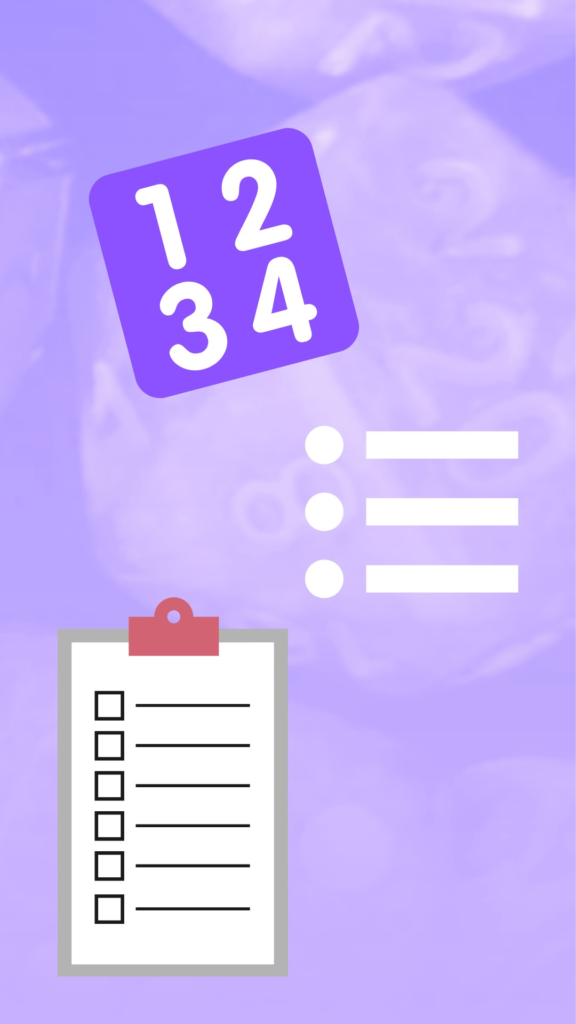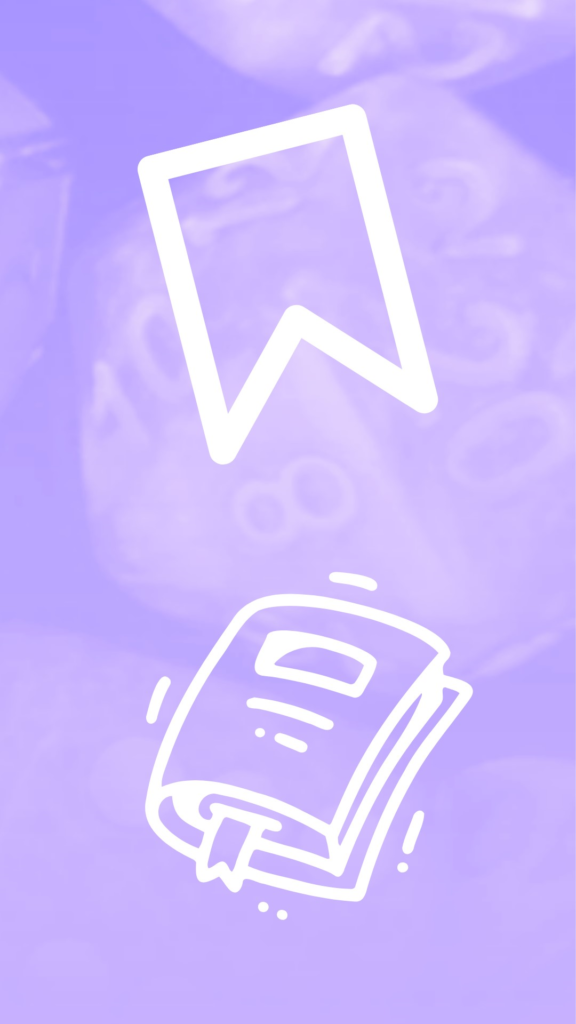Tips and Tricks: Making effective TTRPG system “Cheat Sheets” for your particular game
Jump to:
- The importance of a summary sheet
- Features of a valuable cheat sheet
- Numbered sequences
- Bullet points
- Page number references
- Layout and font size
- Other considerations
- Break down of example of TTRPGs summary sheets
- Glyfi SRD
- Making a TTRPG for YOUR Particular Kid
The importance of a summary sheet in TTRPGs (especially with kids)
With trying out so many different games and systems, I sometimes have a hard time remembering the details from one system to the next if the mechanics are similar to another game I’ve played, and cheat sheets or summary sheets provide an EXCELLENT reference to keep the game on track. This flipping between systems is pretty common for after school or library groups and when trying to find a system that works for kids at home.
It also can be very difficult to recall key information from a medium sized (20+ pages) or larger (60+ pages) game due to the amount of detail presented. This is exacerbated when you’re simultaneously trying to moderate some extra chaos, questions, and ideas from younger players who may want to push the rules a little more or have a lot of creative plans that you want to facilitate without leaving the game rules totally behind.
Cheat sheets are also really important for giving early readers autonomy. Even a small booklet with heavy text can be inaccessible for kids who aren’t yet proficient in reading and can discourage them from joining the game. A well constructed summary sheet however… that gives them something that they can read and access more readily so they can participate without significant guidance.
These are some of my top reasons for wanting a summary sheet with games I play, but there’s also so many others – taking notes and making a summary sheet is a good way to help you understand the game better, it’s easier for teachers and librarians to use with students if there’s reduced prep, providing a quickstart guide with your game is a GREAT feature, they help players to hone in on the game’s core, and the list goes on.
What features help make a summary or cheat sheet valuable
I’ve talked about some of the reasons why you should make a cheat sheet or include one in your game, and now I want to break down what cheat sheet features have helped in my games the most. These features are coming from my experience for making a summary sheet for almost every game we’ve tried or using summary sheets that are already included with games we’ve played.
Numbered sequences
First, if your game has any combat or challenge sequences with multiple steps or there’s a fairly involved character creation process, it is very helpful to include, not just options, but a clearly numbered progression to show what to do and in what order.
For example, if you want character creation to include generating name, pronouns, three backstory elements, stats, special moves, and a picture of the character, you can write that out as I have below using numbers to indicate what order you intend this to be done in.

Create your character by filling in:
- Name and pronouns
- Three backstory features
- Stats (-1, 0, +1, +2)
- One special move
- Character portrait
This not only bullet points the steps required, but it helps players to focus on one thing at a time. They aren’t trying to think of all 5 steps simultaneously and how they’re going to fill that in, it’s one thing at a time, and it’s very clear what order is intended.
The example above showcases character creation, which typically allows some time for processing – this sequence becomes even more important during combat or challenges when there’s pressure and excitement as well.
Bullet points
In cases where the order doesn’t matter or you want to make notes, bullet points work wonderfully… if they are used effectively.
I’ve seen some summary sheets that have bullet points, but the text for that point is a whole paragraph or sentence, which doesn’t help much to consolidate the info. Keeping your bullet points concise and clear, similar to if you were making a slideshow presentation, is really important for accessibility.
Because I didn’t showcase a combat sequence above, I’m going to do it here and show a combination of using numbered sequences and bullet points to describe a combat process that would take several pages in a book to explain.
1. Roll for this round’s turn order
2. Complete 2 of the following on your turn in any order
- Use a combat item
- Use a weapon
- Use a consumable
- Cast a spell
- Move
3. Draw a chaos card, then:
- Play the card
- Discard but tick the chaos meter
In a book, this might have a whole paragraph or page about each point, which can get confusing to follow mid-combat having to flip between pages and search for paragraph headers. Having the summary here makes it so you can quickly jog your memory on what you’ve read OR can easily summarize everything for new or young players.
Page number references

Next, I want to cover page number references. These are not something that I see in a lot of pre-made cheat sheets that come with the game, but I always add them when I play or will include them when I’m making my own when trying a new system.
The summary sheet is there to jog your memory, but you do sometimes need the rule details, and this lets you quickly find that in the book, especially with larger game books.
Taking the turn order example from the previous section, this could look something like:
- Use a combat item (p10)
- Use a weapon (p13)
- Use a consumable (p17)
- Cast a spell (p18, spell list p 32-45)
- Move (p8)
It’s a small amount of information to add that can have a lot of value to players.
If you’re worried about cluttering the sheet with numbers and references, I would also suggest that you could have one additional quick reference card, especially if you have a downloadable game that won’t impact your printing costs, that includes the page references while the others don’t. The one with page numbers can be for the game facilitator while the ones without page numbers can be for the players. I do this all the time when playing with my kids, and it really helps having a page reference guide somewhere on the table.
Layout and font size
Generally, I keep all my reference sheets to one page with decent sized text and try to organize or group sections of rules into boxed in zones.
With font size, trying to fit everything on one page by shrinking the text down more and more does not help so much with accessibility, and it can make it look more intimidating. I remember in school, we’d be allowed to bring an equations reference sheet to help on a test, and it was WAY more effective to having the actual important notes than it was to have tiny handwriting of EVERYTHING because, in the later, it took 5x more time to find the equation that I needed amongst my text.
I would recommend that if you’re hitting more than 3 pages for your summary sheet(s), focus on where you can consolidate, reduce sentences to bullet points, and showcase detail by giving a page number instead.
I also make sure that it’s grouped and the layout is really clear so I can follow it mid-game. I will put boxes around certain sections or have the game notes broken down into three columns on a landscape oriented page so that I can quickly go to that section and focus on it instead of my eyes taking in the whole page at the same time. This helps with kids too because they can pretty readily get used to “the first column is character creation” and “the second column is combat” to concentrate on reading just the part that’s important at the time.
Other considerations for your TTRPG cheat sheet
There’s other elements that can help with creating an effective cheat sheet, but they do vary with the system and, for me, have been more on the “nice to have” side of things. However, I would very much recommend that you consider some of these elements as well:
- Color coding
- Headers for different sections
- Asterisks for key points
- Pictures
- Check boxes
- Tables
Break down of examples of my TTRPG “cheat sheets”
For my games, I tend to keep them very short so they already kind of are a cheat sheet, or I will include the summary in the character sheet as much as I can. However, there are a couple that I’ve made, and I hope they can help you get some ideas for your games!
Both of these are free to download on my itch.io, so please check them out and compare to their respective main documents, as needed.
Glyfi SRD reference sheet
My Glyfi reference sheet is for a system reference document that has 3 pages of rules (which is why I did not include page numbers since it is already very short). I have bullet points with just a few words to help with remembering steps, I use symbols that connect to the main rules document, and I use a numbered sequence in the challenges/encounters section. I don’t include any explanations since that can be found in the main rules document.
Making a TTRPG for YOUR Particular Kid reference sheet
The Making a TTRPG for YOUR Particular Kid sheet gets a bit meta because it’s a cheat sheet about making a game versus playing one, but I wanted to show the most complex or busy summary sheet that I’ve made as well.
The background for this sheet is that I write a lot of tips and tricks articles (just like this one) with the intention of grouping them into summary documents once I have all the details written. This is a one page worksheet that can be used as a standalone OR can combo up with a short 3 page document that provides more space to fill in details and links to my other articles that deep-dive on some topics (similar to using page numbers to go back to a large book).
The sheet below has steps organized into columns and boxes so that, even though there’s a lot of info, you can focus on one section at a time, it uses bullet points with minimal text, and it utilizes charts when it makes sense to have information organized side-by-side. Steps are clearly numbered in the order that I want them followed, and I use big clear headers to it’s easy to find the different steps amongst the smaller text.
I hope this discussion and the examples shown here help with creating tools for your games, and please let me know if you have other ideas for how best to use and make summary sheets for TTRPGs!
If you liked this post, make sure to subscribe to the TTRPGkids monthly newsletter to stay up to date on the latest reviews, tips and tricks, game and podcast list updates, and more! Thank you for playing tabletop RPGs with your kids and sharing this awesome hobby with the next generation!



Thank you for this wonderful write-up. I’m a huge fan of cheat sheets and create them regularly for games I’m going to run!